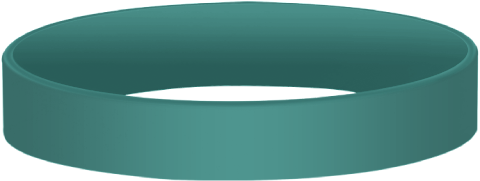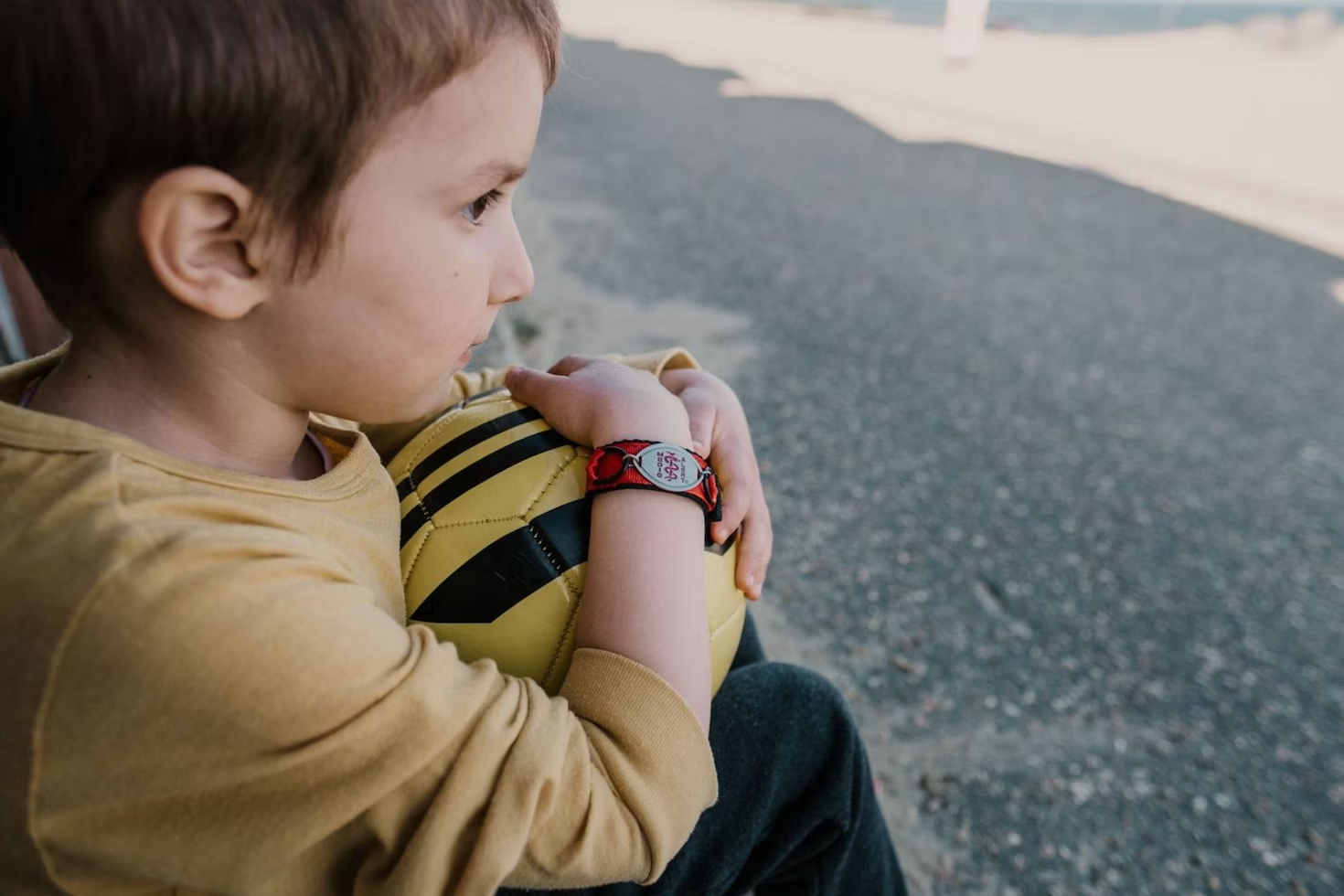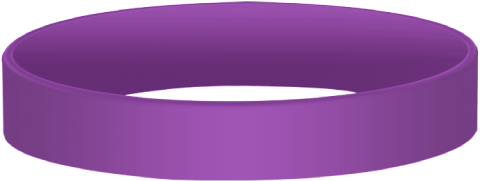Table of Contents
I. The Benefits of Awareness Wristbands
II. Wristbands for Cancer
III. Wristband for Tourette Syndrome
IV. Wristband for Dementia
V. Wristband for Autism
VI. Wristband for ADHD
VII. Wristband for Epilepsy
VIII. Creating Your Own Awareness Wristbands Online
In the last two decades, we’ve seen a major uptick in awareness wristbands and bracelets to show support for causes that impact our lives and the people in our communities.
Custom wristbands are created for a variety of important causes, ranging from cancer and Tourette syndrome to behavioral disorders and other severe conditions. These wristbands serve as powerful tools for raising awareness, providing support, ensuring safety, and aiding in fundraising efforts.
Let’s explore some of the most common and impactful awareness wristbands and how you can customize your own at Wrist-Band.com.
The Benefits of Awareness Wristbands
Awareness wristbands offer dual benefits. Firstly, they play a crucial role in raising awareness and generating aid for individuals living with various physical and mental health conditions.
These wristbands, often customized with meaningful slogans and symbols, are sold by communities and organizations. The proceeds from these sales are channeled to support families in need and contribute to research and treatment efforts.
Secondly, wristbands can be lifesavers when used as medical ID bracelets. They are particularly vital for individuals with specific health challenges. For example, some may be unable to communicate during a medical emergency, while others might have severe allergies or unique behavioral reactions.
These bracelets provide essential information quickly and efficiently, ensuring both the patient’s safety and the effectiveness of the treatment they receive. Medical ID wristbands are indispensable in emergency situations, guiding medical staff to provide the best possible care.
Wristbands for Cancer
Cancer awareness wristbands and bracelets have become a significant symbol in the fight against this disease. This trend was ignited in the early 2000s with the iconic yellow “Livestrong” wristband, launched to honor Lance Armstrong’s battle with cancer. This initiative quickly blossomed into a widespread movement.
Nowadays, numerous nonprofits and cancer organizations sell wristbands bearing powerful messages to raise funds for research and provide financial assistance to patients and their families. These wristbands come in various colors, each representing a different type of cancer: bright pink for breast cancer, purple for pancreatic cancer, and light blue for prostate cancer.
Below is a table outlining various types of cancer, their corresponding wristband colors, and the key awareness campaign initiatives or notable aspects associated with each cancer type.
|
Type of Cancer |
Wristband Color |
Awareness Campaigns |
|
Breast cancer |
Pink |
Annual breast cancer awareness month in October, including widespread educational events, mammogram promotions, and fundraising walks |
|
Brain cancer |
Gray |
International Brain Tumor Awareness Week in October, focusing on research fundraising and sharing stories of those affected |
|
Bone cancer |
Yellow |
Activities during Bone Cancer Awareness Month in July, emphasizing early detection and research advancements |
|
Blood cancer |
Red |
World Blood Cancer Day in May, with campaigns to increase donor registration and support for blood cancer research |
|
Prostate cancer |
Light blue |
Movember campaign in November, encouraging men to grow mustaches to raise awareness and funds for men’s health, including prostate cancer |
|
Pancreatic cancer |
Purple |
Pancreatic Cancer Awareness Month in November, with various events to educate about symptoms and support research |
|
Skin cancer |
Black |
Skin Cancer Awareness Month in May, including sun safety education and free skin screening events. |
|
Kidney cancer |
Orange |
Kidney Cancer Awareness Month in March, with efforts to educate about risk factors and promote research |
|
Lung cancer |
White |
Lung Cancer Awareness Month in November, featuring campaigns on smoking cessation and early detection |
|
Ovarian and cervical cancer |
Teal |
September is Ovarian Cancer Awareness Month and Cervical Cancer Awareness Month in January, both focusing on symptom awareness and regular screenings |
|
Childhood cancer |
Gold |
September is Childhood Cancer Awareness Month, with emphasis on support for affected families and funding for pediatric cancer research |
These wristbands are more than just accessories; they are symbols of solidarity and hope. They offer support to those undergoing treatments like chemotherapy or radiation, carrying messages of courage and endurance.
Many people buy these bracelets in bulk, personalizing them with inspiring slogans to sell for fundraising purposes. This provides financial support but also shows solidarity with the patients and their families during their challenging journey.
What messages do these cancer bracelets typically feature? They are often adorned with texts, slogans, or symbols that create a sense of unity among those affected by cancer, their loved ones, and the community at large. This approach effectively raises awareness and forges a strong bond of solidarity within and beyond the cancer community.
Popular slogans for cancer bracelets include the following:
- “F*** cancer”
- “Never give up”
- “Choose hope”
- “Fight. Believe. Hope”
- “Crush cancer”
- “Stay strong”
- “Cancer support squad”
Each slogan and color used in these wristbands serves as a beacon of visibility and recognition, encapsulating the collective spirit of resilience and support in the fight against cancer.
|
Livestrong Legacy: The yellow “Livestrong” wristband campaign raised over $100 million for cancer research and support services, revolutionizing awareness campaigns worldwide. |
Wristband for Tourette Syndrome
It’s crucial for individuals with Tourette syndrome, especially those with severe forms, to wear a medical ID bracelet constantly. This simple yet vital tool aids in their safety and effective treatment.
The color for Tourette syndrome awareness is teal. Teal ribbons and wristbands are often used in campaigns and events to raise awareness about this condition.

The bracelet should clearly list essential information, including the following:
- The person’s full name
- Their medical condition (Tourette syndrome)
- Emergency contacts
- Current medications
- Any allergies
- Specific instructions
These specific instructions might include directives like “Call 911 if found alone” or “May resist help,” providing crucial guidance for first responders or bystanders in emergency situations. This information can be pivotal in ensuring prompt and appropriate care.
Wristband for Dementia
Dementia, characterized by a decline in memory and decision-making abilities, significantly affects the daily lives of those over 65. It can compromise safety and well-being, as it often hinders everyday activities like grocery shopping, driving, or communicating effectively.
Medical ID bracelets are particularly beneficial for dementia patients, especially those prone to wandering or getting lost. These bracelets serve as a safeguard, helping caregivers ensure the safety of their loved ones. They typically contain critical details like the wearer’s name, address, emergency contacts, and other essential medical information.
In emergency situations, people with dementia may exhibit distress, aggression, or violent behavior due to confusion or stress. In such scenarios, a medical alert bracelet becomes a crucial tool, providing first responders and medical personnel with immediate and vital information.
The medical alert symbol is often engraved on durable silicone and metal wristbands, serving as a universal sign that the wearer requires special assistance in medical emergencies. This simple accessory can be life-saving, ensuring prompt and appropriate care for dementia patients.
|
Safety First: Medical ID wristbands for dementia patients have helped reunite countless individuals with their families, providing crucial information in critical moments. |
Wristband for Autism
Medical ID bracelets are vital for individuals with autism, especially children, who often face communication challenges and may wander.
To enhance their safety, these bracelets should prominently display the wearer’s name, their Autism diagnosis, emergency contact numbers, and key information like “Non-verbal” or “May not accept help.” This critical data assists medical staff and responders in effectively aiding a child in distress.

Blue is the recognized color for Autism awareness, and the puzzle piece is its universal symbol. This combination of color and symbol is widely known, aiding in the quick identification of the individual’s condition in stressful situations where they might be unable to communicate effectively. This recognition is essential in ensuring a prompt and understanding response from those around them, particularly in emergency scenarios. If you're curious about other causes tied to the color blue, learning the meaning behind blue wristbands can help you better understand the full spectrum of health conditions, support causes, and awareness movements they represent.
Wristband for ADHD
For people with Attention Deficit Hyperactivity Disorder (ADHD), wristbands offer a straightforward way to manage daily tasks. These silicone bands, each representing a different task, can be labeled or color-coded. Users write their activities on the wristbands and arrange them in order of priority. As tasks are completed, the relevant wristband is removed, providing a clear visual and tactile indication of progress.
Silicone is the material of choice due to its comfort, hypoallergenic nature, and durability. The bands’ writable surface allows for easy note-taking and adjustments.
Here are some key benefits of using wristbands as organization tools for those with ADHD:
- Visual reminders: Wristbands serve as constant visual cues, aiding in focus and task recall.
- Structured organization:They help structure and prioritize tasks, which is beneficial for those struggling with executive functions in ADHD.
- Sense of achievement: Physically removing a wristband upon completion of a task can impart a satisfying sense of accomplishment.
While helpful, wristbands are just one tool among many for managing ADHD symptoms and should be used as part of a broader strategy for effective symptom management.
Wristband for Epilepsy
Individuals with epilepsy may face episodes where they lose consciousness, become confused, or experience bodily stiffening, jerking, or shaking.
During such instances, communicating or seeking help can be extremely challenging, and they might even lose awareness of their surroundings. Given these risks, wearing a medical ID bracelet is strongly advised for those with epilepsy.
These bracelets are crucial in emergencies, as they quickly provide medical responders with vital information. This data helps ensure the patient receives appropriate and potentially life-saving treatment. The color purple is commonly associated with epilepsy awareness, making purple bracelets a popular choice.

What role does an epilepsy bracelet play? Primarily, it informs medical personnel about the patient’s condition, enabling prompt and correct treatment. An epilepsy bracelet typically includes the following:
- Emergency contact information
- The individual’s medical conditions
- Current medications
- Any known allergies
This information is essential in guiding healthcare providers to offer the best care possible during an emergency.
|
Epilepsy Awareness: Epilepsy affects 3.4 million Americans and over 65 million people worldwide. Wearing a purple wristband is a symbol of support and awareness, helping to educate others about this neurological condition. |
Creating Your Own Awareness Wristbands Online
If you’re looking for a reliable wristband maker for medical IDs or awareness campaigns, Wrist-Band has you covered. We assist nonprofits and organizations in creating fundraising items and memorable keepsakes to support various causes.
The table below provides an overview of various types of silicone wristbands we carry, including their minimum order quantity, price per piece, and the unique benefits each type offers:
|
Silicone Wristband Type |
Minimum Quantity |
Price Per Piece |
Benefits |
|
Printed wristbands |
1 |
$0.13 |
Versatile and colorful, ideal for detailed logos and messages |
|
1 |
$0.08 |
Classic, long-lasting design with indented text or logo |
|
|
Ink-filled wristbands |
1 |
$0.16 |
Debossed design with added color for visibility and contrast |
|
Embossed wristbands |
10 |
$0.09 |
Raised design for a unique tactile experience |
|
50 |
$0.19 |
Combines raised design with printed elements for a dynamic look |
|
|
Dual-layer wristbands |
1 |
$0.28 |
Two layers of contrasting colors for a bold, eye-catching design |
|
Figured wristbands |
100 |
$0.19 |
Feature a central figure or shape for thematic designs |
|
Full-color wristbands |
100 |
$0.33 |
High-quality, full-color printing for complex and vibrant designs |
|
1 |
$0.09 |
Simple and cost-effective, suitable for a variety of uses |
|
|
100 |
$0.45 |
Durable and premium, ideal for upscale events or long-term wear |
Each type of wristband offers unique benefits, making them suitable for different purposes and preferences.
Whether it’s for community events, personal medical IDs, or durable fashion accessories, our wide range of design options ensures your needs are met with creativity and quality. Explore our diverse wristbands, from Tyvek wristbands to metal clip bands, and find the perfect fit for your project.
Share your story or support a cause. Awareness wristbands are more than fashion; they’re a powerful tool for change. Make a difference today!

/filters:quality(80)/fit-in/630x380/blog/image-1703209916.jpg)